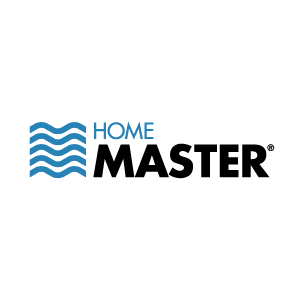What makes the Home Master better than other reverse osmosis systems?
/Areas of Excellence
⇨ Purification: the NSF certified components and Dow Filmtec brand reverse osmosis membrane work together to remove dissolved solids like heavy metals, nitrates, lead and fluoride; sediment, turbidity, and rust; and chemical contaminants like chlorine, chloramines, pesticides, herbicides and gasoline additives. Additional purification is available with the iron and UV filters, and the permeate pump upgrade. For more information please see the specific product page.
All Home Master RO systems now use powerful catalytic carbon filtration media in the carbon pre-filter to treat the very persistent chemical disinfectant chloramine. Ordinary carbon filters are unable to effectively remove this stubborn contaminant that is now being deployed nationwide to replace chlorine. It takes the more advanced carbon media known as catalytic carbon. Advantage - Home Master RO!
⇨ Leak elimination: The leading competitors canister type RO system uses the same filter housing year after year, subjecting it to constant high water pressure, micrororganism build-up, water erosion, and wear from maintenance. Only the filter element is replaced. After about 5 years the walls and seals of the competitors canister filter housing begin to weaken and decay, eventually failing, potentially causing a substantial leak. The modular filters found in the Home Master brand Reverse Osmosis Systems are changed annually virtually eliminating this problem. Also by changing the modular all-in-one filters annually it leads to a more hygenic system.
⇨ Speed: The water flow from a typical home RO system will takes 40 seconds to fill a tea kettle or large pasta pot. This level of performance was unacceptable to our engineers who developed the Fast Flow Ro! kit for the Home Master RO which effectively doubles the water flow from the RO faucet!
⇨ User-friendliness: The first thing you will notice about the Home Master Reverse Osmosis system is that the filters are incorporated into the filter housing, so that when it comes time for the annual filter change, the filter, and the entire filter housing, are disposed of. This is to prevent flooding in your home and make your annual service easier. Just unplug and go - no tools required!
⇨ Efficiency: Home Master RO system uses high grade filters designed to yield 3900 gallons of purified water, with carbon filters made from catalytic carbon and with filtration down to 5 microns. Compression disks in the Home Master's advanced inline filters prevents channeling and dumping and permits an outstanding 8 full inches of carbon contact for greater purification. The competition typically uses lower grade filters made from coal carbon rated to purify just 1500 gallons of water because of the carbon grade and the insufficient carbon contact time made with a thin wall carbon block. The competition also uses recommends multiple filter changes per year in order to compensate for their poor quality filters.
⇨ Warranty: 100% total satisfaction guaranty for 30 days or your money back; 5 year limited warranty.
Upgrade the already advanced Home Master Reverse Osmosis system even further with the following options:
Artesian Upgrade adds minerals to the water after the reverse osmosis membrane has removes virtually everything so that the product water is no longer acidic / balances the pH, improves the taste and provides 15-30 mg/L of the beneficial minerals calcium and magnesium.
The Patented Full Contact version remineralizes the water twice restoring twice as many minerals as the regular Home Master Artesian so that the water tastes even better, has an alkaline pH, and provides 30-60 mg/L of the beneficial minerals calcium and magnesium.
Permeate pump reduces water waste by up to 80%, increases water production by up to 50%, allows the storage tank to fill fuller, and produces slightly cleaner water by preventing "TDS creep." It is a non-electric pump that harnesses the movement of the waste water for power.
Anti-microbial tubing prevents growth formation of microorganisms on the inside of the tubing. This upgrade replaces the standard system tubing with antimicrobial tubing.
Refrigerator Connection Kit allows you to easily connect your Home Master to your refrigerator‚ water dispenser and icemaker. You may also use this kit to connect to some coffee makers, humidifiers, or other water using appliances (not dishwashers or laundry).
Upgraded RO Faucets have more elegant finishes and styles, and deliver greater water flowrate.
* All components meet FDA food grade materials standards, and/or NSF and California performance standards where applicable.
¹ Average reduction on chlorinated municipal water supply. Your results may vary
² Typical filter life. Your results may vary.
³ Average reduction. For list of chemicals removed by carbon please see our FAQs page





